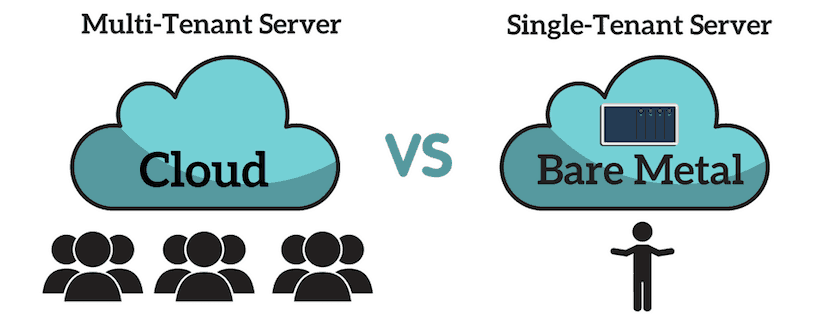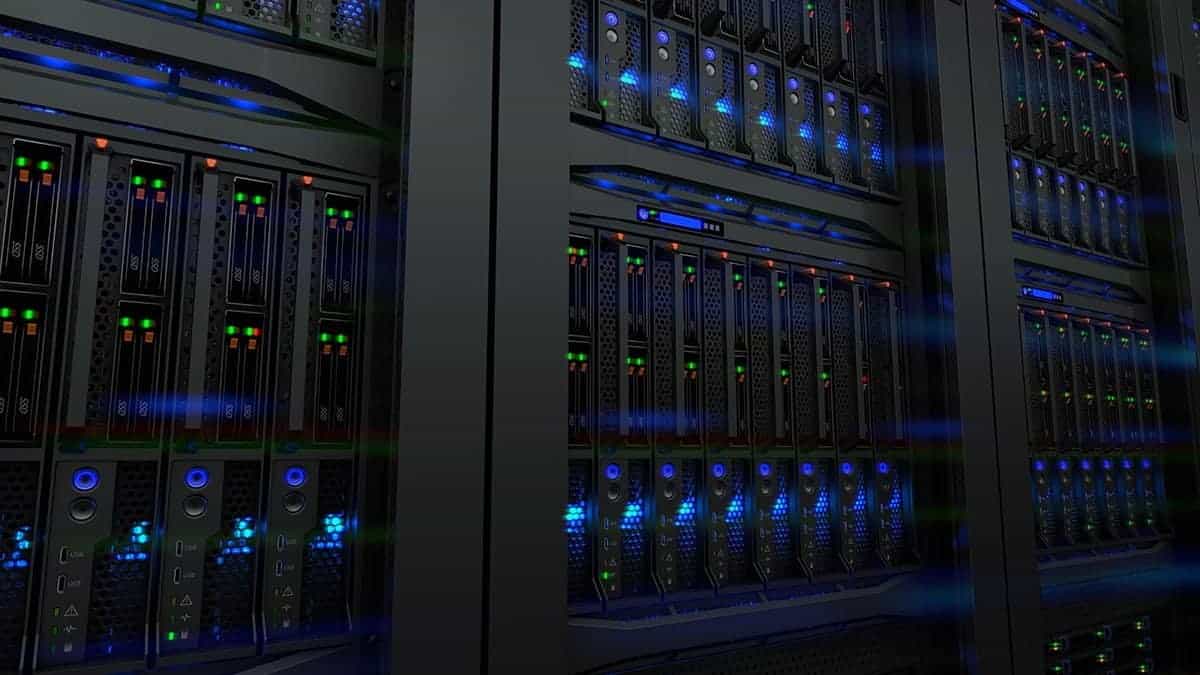Many technology professional initially think of bare metal recovery as a tool for emergencies only.
A disaster that impacts your network can take any number of forms. A flood, storm or fire could wipe out your data center or systems; hackers could hold your network for ransom or a malicious insider could let cybercriminals in. In the end, it does not matter if you had a careless employee or faced the wrath of Mother Nature — the result is a catastrophic failure of your network and the total interruption of your organization’s ability to do business.
A backup recovery strategy is paramount. Most incidents allow for recovery.
Simple turn things over to an IT team or even a virtual program and wait for the restoration of your systems. But for those cases where you are unaware of the extent of damage or that destroy your systems beyond repair, bare metal disaster recovery may be needed.

What is Bare Metal Backup?
With traditional bare metal recovery methods, you move information from one physical machine to another.
Enterprise systems allow you to try a variety of bare metal backup combinations.
This can include moving a physical machine to a virtual server; a virtual server to a physical machine; or a virtual machine to another virtual server.
Some methods require converting your original system’s physical image into a virtual image. Utility tools for this include dd in Linux; ddr in IBM VM//370; WBadmin in Windows Server 2008; and Recovery Environment in Windows.
You can also use your original machine information to create multiple identical virtual or physical machines.
These can be useful if you’ve made an optimal machine or a server configuration you like. Backups of your original machine can be handy if you ever need more versions. For instance, you may want to increase space in a server volume.
Your virtual servers will be able to come online quickly from the backup. This is a better option than taking a long time to create something new from scratch each time.
Likewise, if one of your virtual servers appears to be crashing, you can make a quick identical copy.
What is Bare Metal Restore or Recovery?
Bare metal recovery or bare metal restoration is a type of disaster recovery planning for your network.
This is used after a catastrophic failure, breach or emergency; the “bare metal” part of the term refers to starting almost from scratch. When an IT expert performs this task, they are working from the very beginning and recovering, reinstalling and rebuilding your system from the ground (or bare metal) up.
This approach means starting with clean, working hardware and reinstalling operating systems and other software; this way you know your network is being restored on a new, error-free base without any lingering risk or problems.
Begin bare metal restore by saving an image of your existing machine or server onto an ISO file or placing it onto a thumb drive or a network server. Then load the image or file onto your ‘blank’ machine.
The term ‘bare metal’ describes how the second machine contains just a hard drive, a motherboard, processor and a few drivers.
If you perform the formatting correctly, you’ll be able to bring back your settings and data quickly. This can be done in a few hours, faster than a full rebuild. Re-installing all applications and drivers could take days.
A lot could go wrong if recovery takes place incorrectly. If the motherboards, processors or BIOS differ even slightly, the new machine may not boot. Data loss, corrupt or general data failure all could take place.
Newer tools improve the odds of data being adequately restored. Individual drivers can modify system settings on the second machine’s CPU. This can make sure an adequate boot-up occurs even if the hardware is different.
Bare metal restore is recommended as a smart disaster recovery method. Loading data onto a new machine takes place quickly. This can be useful for critical situations such as hardware failure or cyber attacks.
While this is a restore of last resort (no one wants to have to do it), it does provide you with peace of mind about the process and your network’s integrity.
If your disaster was a breach, managing security risk is an essential part of recovery resume your normal functions with confidence.

Benefits of Bare Metal Restoration
Bare metal restoration can be useful for emergencies, virtual environments and hybrid cloud/dedicated systems.
At the same time, a BMR shouldn’t be thought of as a continuous server backup.
Most standard system backup tools allow users to designate which items should be saved. This often includes documents, folders and application data, not the applications themselves. Creating a full backup also may allow you to choose when and how often it takes place.
Another type of backup is a system state, which allows you to recover your operating system files even with a lost registry.
A restoration, on the other hand, copies over an entire drive, including applications. It can be compared to a one-time snapshot of your machine or server at a specific time.
Bare metal restoration is similar to Windows System Restore. This tool restarts your system from a previous save point. A BMR does the same task but does so from within a different machine.
A bare metal restoration can also include a system state backup and disaster recovery.
Data Backup vs. Data Recovery
Bare metal recovery can go beyond emergencies or multiple virtual machines. It can also enhance cloud architecture, improve security and conserve resources. Another use has been found for bare metal recovery. It can be a way to create multiple copies along with backups of virtual machines easily.
You can also create a bare metal dedicated server. This can be useful for companies that use cloud services but have traffic spikes during peak times. For instance, a game server could demand varying cloud storage space and bandwidth throughout the day. These types of situations often require higher costs.
Off-loading data to a bare metal dedicated server instead of the cloud can offer:
- More customization. A dedicated server makes it easy to customize server settings instead of the standard options from a shared cloud.
- Higher performance. Bare metal servers remain separate from shared cloud resources, so there’s less processing demand or lag and no type 1 or 2 hypervisor required.
- Stronger security. A bare metal dedicated server stays private from other shared cloud backup services. The ‘single tenant’ won’t need to co-exist with other cloud businesses, so may be ideal for storing sensitive information.
- Cost Savings. Lower demand, bandwidth, and traffic can mean IT cost savings.

Need to perform a Bare Metal Backup Recovery?
If you have suffered a catastrophic failure and all other recovery measures have failed, it is likely time to consider bare metal recovery. In some cases, your internal team or external data recovery experts may be called in to review the incident and determine the extent of the damage.
Once other measures have been exhausted, bare metal disaster recovery is the final option. How swiftly you decide to proceed with this option will depend on:
- The extent of the damage to your systems
- Type of damage
- Overall possibility of recovery
- How long it takes to troubleshoot or try other, less intensive methods first
What to Expect with During Restoration
Once other avenues have been exhausted and your team makes the decision to go with this form of data recovery, your network will be rebuilt from the ground up:
- Physical location repair: If your emergency was weather-related, fire-related or otherwise resulted in physical damage. Then the first step for any recovery will be restoring and rebuilding the physical setting. Structural work, waterproofing, and HVAC work may be required to ensure that the space is not only safe for your team but that your servers, workstations and other pieces will operate at peak efficiency. This is also the time to add in any additional physical security or measures to prevent attacks in the future.
- New Hardware: This is the “bare metal” referred to in the name of this recovery process. You’ll add new, clean and bare hardware to your server area; by starting from the metal up, you can be sure your pieces are untainted and ready to use. Once these are installed, you’ll be able to recover and rebuild your system.
- Operating Systems: Your operating systems will be added to the hardware to create an optimal environment for the platforms, programs and processes your business relies on.
- Application Installation: The apps you use to run your business will be added to your system. The fresh application ensures that you are working with pristine equipment and creating a new network that won’t be affected by the recent emergency.
- Clean Data Restoration: Backup data that is unaffected by whatever happened to mess up your network in the first place can be added in at this time. Whether you have disks, cloud recovery or another backup, it can be restored into your new system.
- Add Users: Adding back in your team and allowing them to access your restored system is the next step. Ideally, you’ll have clarified your password requirements and ensure that any BYOD (Bring Your Own Device) programs are secure as well.
- Plan for next time: If you already have bare metal disaster recovery software in place, this process is far more simple. Once you have been through a recovery of this nature, it is a good idea to think ahead to next time. What process, material, backup or functionality would have made it easier for you to recover your data? Is there a solution that would complete the task more quickly, allowing you to resolve the issue without a lot of downtime rapidly? Learning from this experience can help you be better prepared for the future and ensure that you don’t have to worry about what comes next.
Why Disaster Recovery?
Every business needs a data recovery plan.
According to the United States Department of Homeland Security, every business that has or relies on a network should have an IT disaster plan.
A whopping 60% of small to mid-sized businesses close forever after a successful breach or failing to prevent a ransomware attack. They can’t afford the downtime and recovery process. Being prepared for any eventuality as part of a business continuity plan can help ensure that your organization avoids this fate.
The need to be prepared has grown in recent years. Criminals have gotten more sophisticated as organizations have begun relying on technology more than ever. The increased reliance on technology coupled with an ongoing and steady increase in risk means that any business with a network needs to be fully prepared for an emergency. This includes preparing for the worst case scenario with bare metal disaster recovery capabilities.
Planning Ahead With Bare Metal Backup and Recovery
Take steps now with server backup to ensure you can recover data later.
Just being aware that threats exist and the extensive damage they can cause is a step in the right direction. Understanding how bare metal disaster recovery differs from general recovery and what is needed for the process allows you to incorporate this into your emergency and business continuity planning.
You have a wide range of options to choose from when it comes to a bare metal disaster recovery system. Select one before you need it. This is the key to a swift and efficient recovery.
If you already have a disaster plan in place and have backed up data, the process will be fast, easy and effective.
If you have to learn about the recovery process after the fact, you’ll face a more complex and less user-friendly process. The resulting delays can have a significant impact on your business. Taking steps now to protect your network can save time, money and headache later.
You’ll be ready for anything, even if the worst happens.



